Júnior Hekurari Yanomami speaks slowly, as though the words cause pain as they rise to his lips. “There was a two-year-old girl with malnutrition, dehydration, pneumonia and malaria. All at the same time. She was taken straight to the ICU [in the Roraima state capital, Boa Vista],” he says. “A seventeen-month-old baby died on Sunday. He was very sick, with malnutrition and dehydration. We were going to transport him [to the doctor] straight away, but it started to rain at four in the morning and only stopped at two in the afternoon. The plane couldn’t take off. He died thirteen [minutes] after midday,” he explains, with the detail of someone who can’t forget what he’s seen. The stories come, one after the other, like a cry of anguish. These are witness reports from his visits to the health center in Surucucu, his community in the Yanomami Indigenous Land, where the Brazilian government has installed a medical task force to assist victims of the ongoing genocide in the demarcated territory. The most serious cases are flown from Surucucu to hospital in Boa Vista. “Last week a father and son died on the same day. Everyone is in mourning, all the time. One [funeral] ritual ends, and the next one begins,” he explains. “In one community, a father, daughter, the leader and another young man died. All from malaria.”
The Surucucu task force comprises doctors and nurses who provide care to several surrounding villages, while teams in a number of the other 68 healthcare units within the Yanomami territory, where more than 350 communities are spread over an area of 9.6 million hectares, have also been strengthened. In serious cases, aircraft from the Brazilian Air Force or from a contracted private company seek out the patient in the community. But the Yanomami are often unable to communicate with them. And so they take to the forest trails in search of medical help. “There was an elderly man that people had carried on their backs for 12 hours. Some walk for two, or three days,” says Júnior. The accounts are reminiscent of the end of a war, when the bombs cease and the victims, wounded and shaken, desperately seek the help that has finally arrived. But this war is far from over.
The situation is the result of right-wing extremist Jair Bolsonaro’s four years in power, during which the health structure within the Yanomami territory was dismantled. Illegal prospectors, operating with complete freedom and encouraged by the president himself, expelled medical teams from a number of villages, with no response from the government – three health centers remain closed. Mining has destroyed the areas where Indigenous people from many villages farmed, hunted and fished, bringing severe hunger and malnutrition. The rivers from which they drink have been contaminated by the feces of miners, causing acute diarrhea. Fragile bodies were infected by diseases carried by the invaders, such as flu and malaria, which, without doctors and medicine, became graver still. And the worst may still be to come, in the form of the long-term effects of mercury used in mining on the health of Indigenous people.
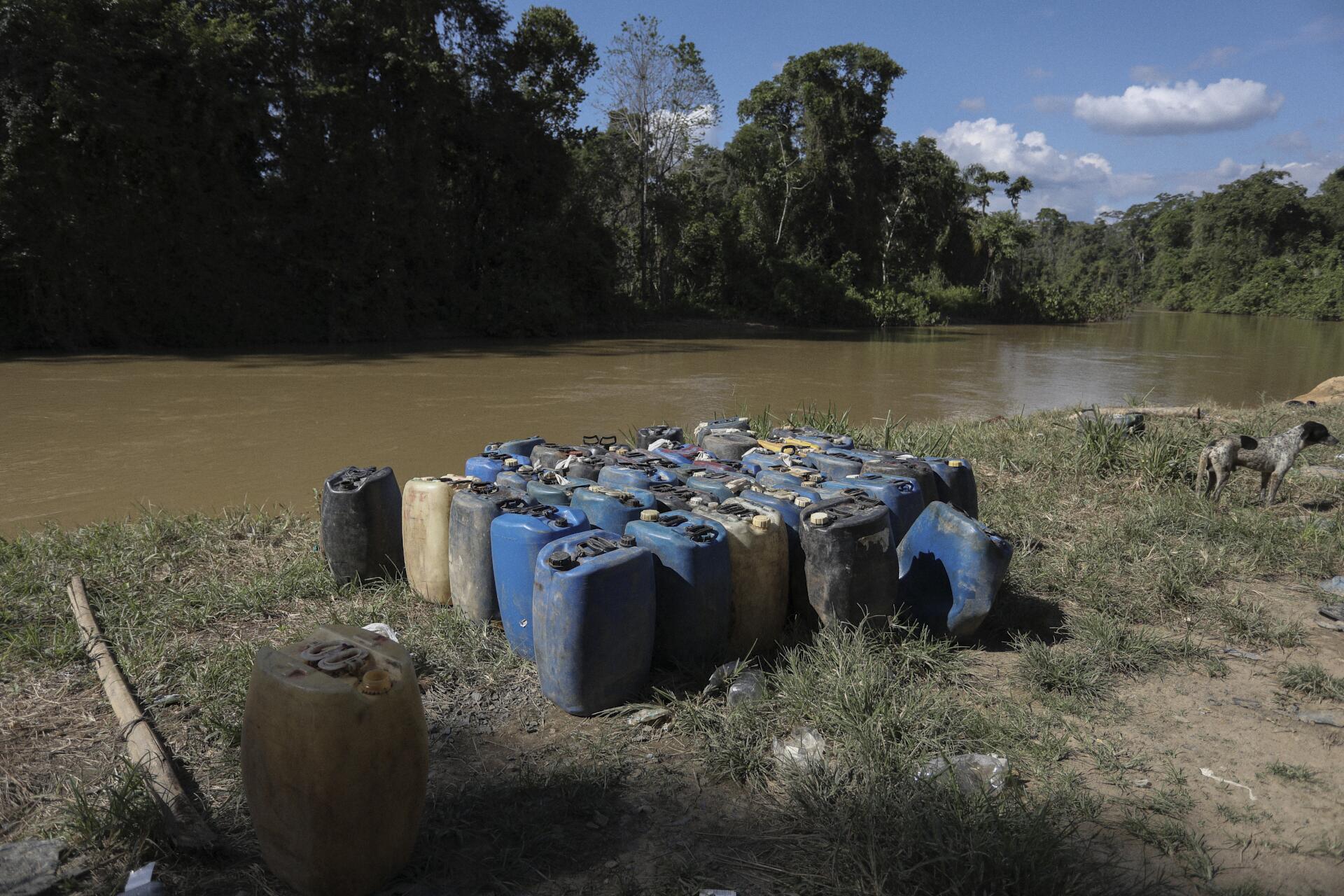
GALLONS OF FUEL ON THE BANKS OF THE URARICOERA RIVER, ONE OF THE MAIN ACCESS ROUTES OF ILLEGAL MINERS INTO THE YANOMAMI INDIGENOUS TERRITORY AND ONE OF THE ESCAPE ROUTES OF THOSE TRYING TO LEAVE THE MINING SITES. PHOTO: MICHAEL DANTAS/AFP
Since the task force was installed, on January 16, aircraft have taken severely ill Indigenous people to Boa Vista on 112 occasions, while patients have been transported from the villages to health centers within the Indigenous territory 111 times. To have an idea of the magnitude of the operation, in 2021, 714 emergency transfers, an average of 60 per month, or two a day, were carried out in the Yanomami territory, according to data obtained by SUMAÚMA. Today, that has increased fivefold. “We have recently observed at least ten removals a day or more. On one day 23 children with malnutrition were transported to the City Children’s Hospital. When we visited the hospital, of 15 ICU beds, six were occupied by Indigenous children,” a government report has observed. At the Yanomami Indigenous Health House in Boa Vista, known as Casai, where Indigenous people on their way to hospital or undergoing treatment are given accommodation, there are 281 Yanomami, most hospitalized due to malnutrition, pneumonia or malaria. “Unfortunately, the situation is so serious that we have to focus on urgent or emergency cases. Both Casai and the Surucucu health center have become veritable concentration camps,” said the Secretary for Indigenous Health, Ricardo Weibe Tapeba.
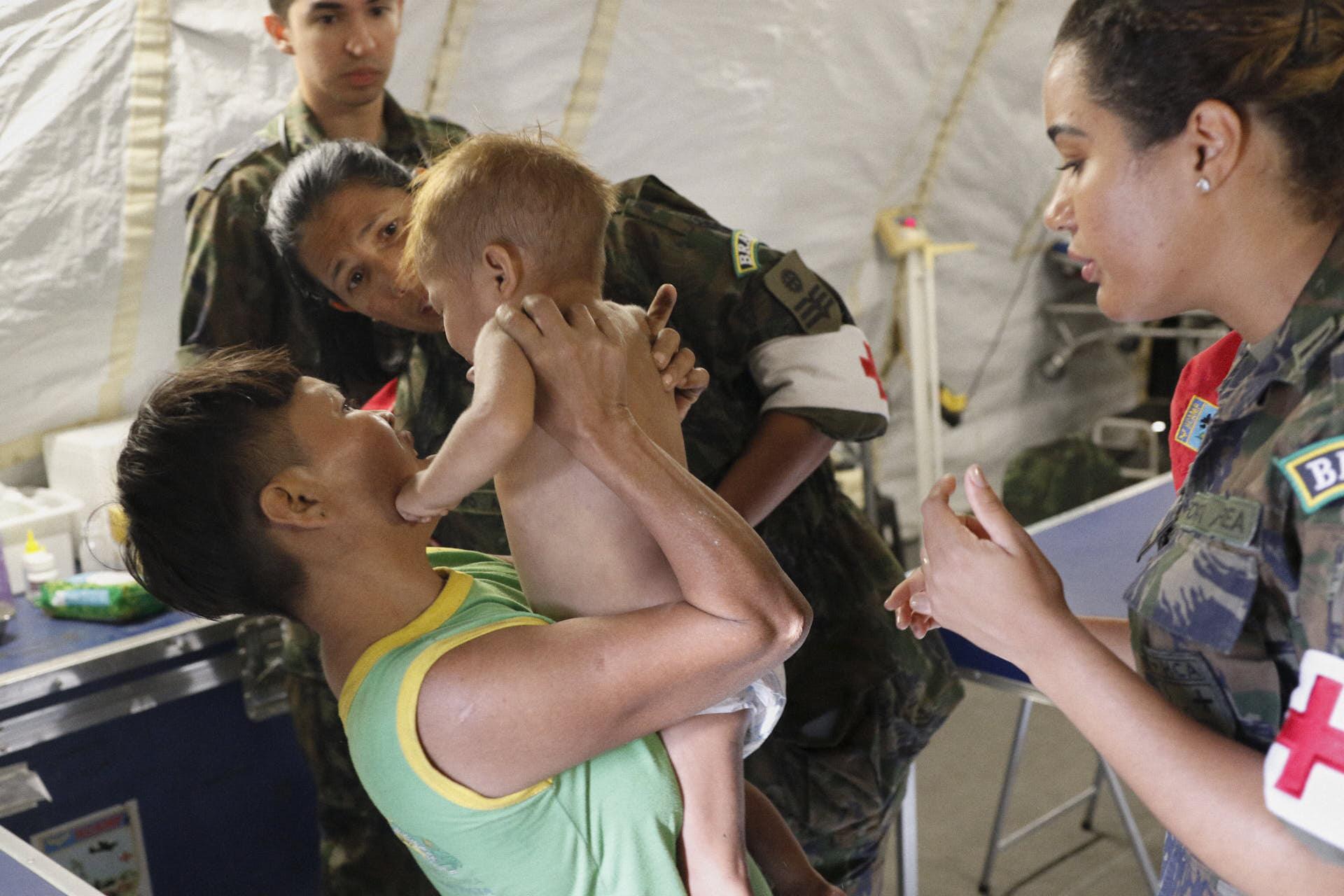
YANOMAMI PEOPLE RECEIVING TREATMENT AT THE FIELD HOSPITAL OF THE BRAZILIAN AIR FORCE AT THE YANOMAMI INDIGENOUS HEALTH HOUSE IN BOA VISTA. PHOTO: FERNANDO FRAZÃO/AGÊNCIA BRASIL
“The health helicopter never stops. It picks people up from seven-thirty in the morning to six in the evening. It carries five people, but the pilot assesses the situation and carries up to the [weight] limit allowed. Since the Yanomami are very skinny, more can fit,” says Júnior, from his small room in the Yanomami Indigenous Health District offices in Boa Vista. As the President of the Yanomami District Council for Indigenous Health, a public agency that scrutinizes the government’s work in the area of Indigenous health, Júnior’s imploring cries about the serious situation of his parentes (the Portuguese word for familial relatives, used by Indigenous people to refer to one another) have, for years, fallen on ears that pretend not to hear.
It was from this room that the first photos of children and elderly people reduced to skin and bones emerged, before being published, along with other photos obtained by SUMAÚMA, in a report that revealed the death of 570 Yanomami children aged five or under during Bolsonaro’s time in office, due to a lack of medical care. “The threats [from illegal miners] increased a lot after that,” Júnior says. Seated on a chair, he keeps his arm outstretched as a brush with genipap ink is drawn across it, covering his skin in long black stripes. Alongside it, precisely drawn circles help to form, little by little, a fresh layer of spiritual protection. In his small room, he is being painted with the designs of his people, and through ink, connects with the wisdom of his ancestors to ward off the evil hurled in his direction. “We need a lot of protection,” he says.
Following the deaths of the children in December, the Brazilian government arrived in the Yanomami territory in January to assess the situation. It was, at first, an exploratory mission, which planned, with Júnior’s help, to visit a number of communities and assess the health and medical care situation in the Surucucu region, says a doctor who took part in the project and asked not to be identified. “It was an exploratory mission, but we ended up performing various medical care roles out of necessity. And I can say with certainty that at least three or four children would have died if we hadn’t arrived,” he says. After SUMAÚMA published its report on January 20, images of malnourished Yanomami and the news of the 570 dead children went viral on social media. President Luiz Inácio Lula da Silva, popularly known as Lula, went to speak with Yanomami leaders in Boa Vista the following day. The Ministry of Health published an ordinance declaring a public health emergency in the territory, and an Emergency Health Operation Center was created, incorporating a multidisciplinary team that now operates within the Yanomami Indigenous Health District Center offices, in a room just a few steps away from Júnior’s. The Brazilian Air Force, which has barely been active in the territory in recent years, set up a field hospital in the Yanomami Indigenous Health House.
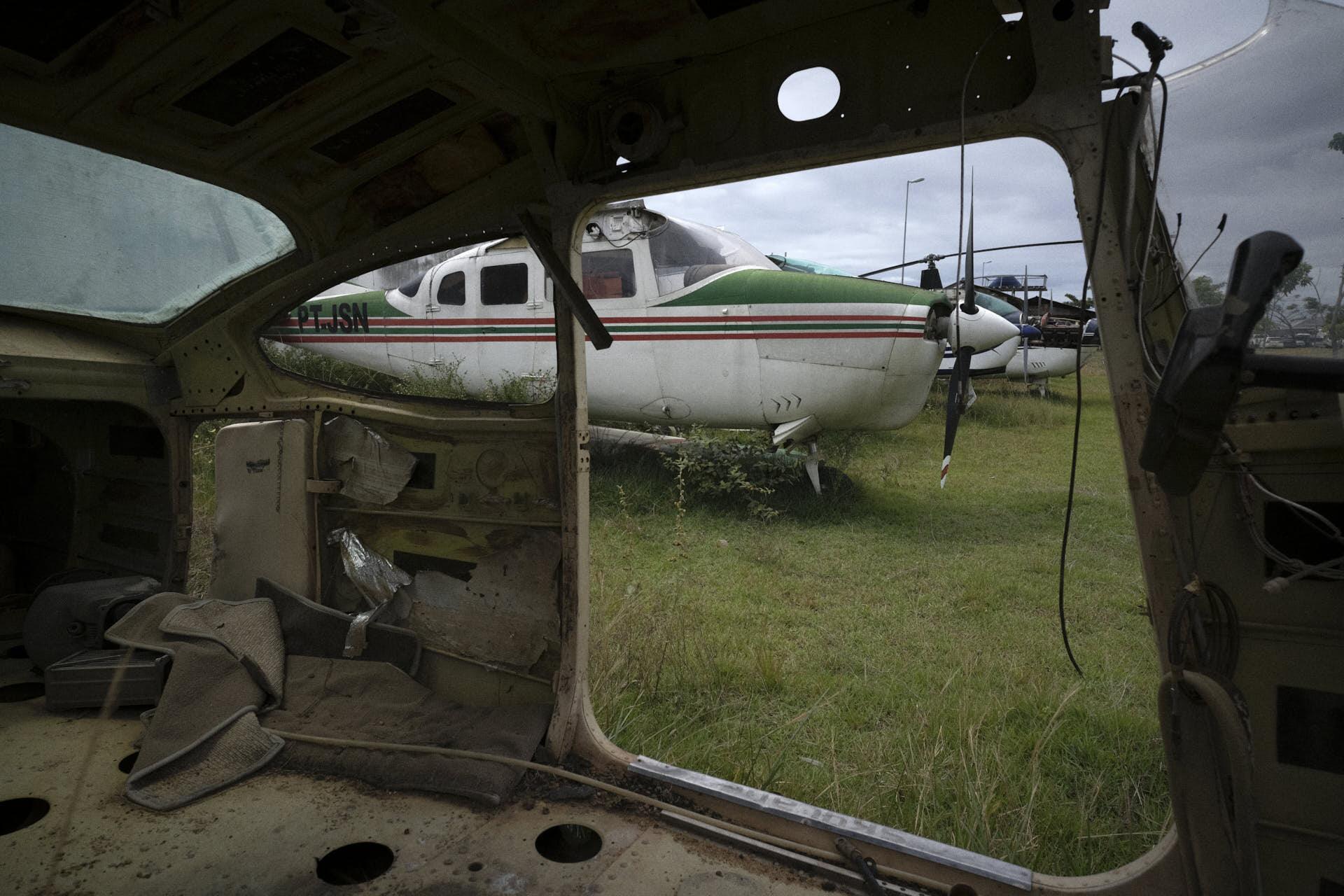
SEIZED PLANES INVOLVED IN ENVIRONMENTAL CRIMES AND ILLEGAL MINING IN THE YANOMAMI INDIGENOUS TERRITORY AT THE FEDERAL POLICE HEADQUARTERS IN BOA VISTA. PHOTO: FERNANDO FRAZÃO/AGÊNCIA BRASIL
On February 6, an operation was launched to remove the illegal miners from the territory. It was coordinated by Ibama, Brazil’s environmental protection agency, and Funai, the federal agency of Indigenous affairs, two agencies weakened and prevented from taking strategic action against illegal mining during the Bolsonaro administration. In the first two days of the operation, a helicopter, a plane, a tractor, as well as two guns, three boats and about 5,000 liters of fuel were destroyed. The agencies also set up a control base on the Uraricoera River, one of the routes used by criminals to enter the Indigenous territory, blocking the flow of supplies to the prospectors. “In addition to gasoline and diesel, the motorboats carried around a ton of food, freezers, generators and internet antennas. All the supplies were seized and will be used by the control base,” an Ibama press release stated. The seizure shows that mining remains active in the territory, despite increased government control.
Violence may increase
The action taken against illegal mining has also raised concerns about a possible reaction from those involved in criminal activity. Earlier this month, the government created a No-Fly Zone to prevent the movement of miners and mining supplies into Yanomami territory. Unauthorized aircraft were prohibited from flying, with violators facing the risk of being shot down by the air force. As a result, aircraft that dared to fly illegally – flying low to escape the government’s control radars – began to charge more than 15,000 reais per person to those who wanted to leave the territory in a hurry. At a mining air strip, both men and women protested against those responsible for the price hike, complaining that at such inflated rates, there was no way out of the area. Videos of the miners, and women involved in mining, began to spread on the internet, showing entire groups of men heading into the forest in single file, embarking on treks that would take weeks. Others left the Indigenous Territory by boat, on their way to a remote, clandestine port from where they would have to pay more than 300 reais for transport to the city.
Tensions in the territory rose. Last Friday, in the Homoxi region, one of the areas most affected by gold mining, three young Yanomami were shot at by miners. One died on the spot, while another was hit in the stomach and taken to hospital in Boa Vista. Brazil’s Federal Police carried out investigations in the area, but did not provide details of their visit to the press. According to Júnior, the victim’s mother wanted her son’s body to remain in the village for the funeral ritual, and refused to authorize its removal. In another community, also on Friday, Yanomami men encountered a group of miners in the forest. There was an exchange of gunfire and two Yanomami and a miner died, according to information received by Júnior. The location, however, is in the middle of the forest, and the bodies have yet to be reached.
Staff in health centers located close to mining areas have also voiced concerns. Teams that work with isolated Indigenous people in the territory fear criminals will seek shelter or open up new mining areas in the most remote regions, home to groups that have yet to come into contact with non-Indigenous people, and who lack immunity to the diseases carried by miners. There is also a fear that the miners will attack such Indigenous people with firearms if they meet in the forest, causing a massacre. Staff at the Funai base protecting the isolated area are also vulnerable to a possible mass invasion by armed criminals.
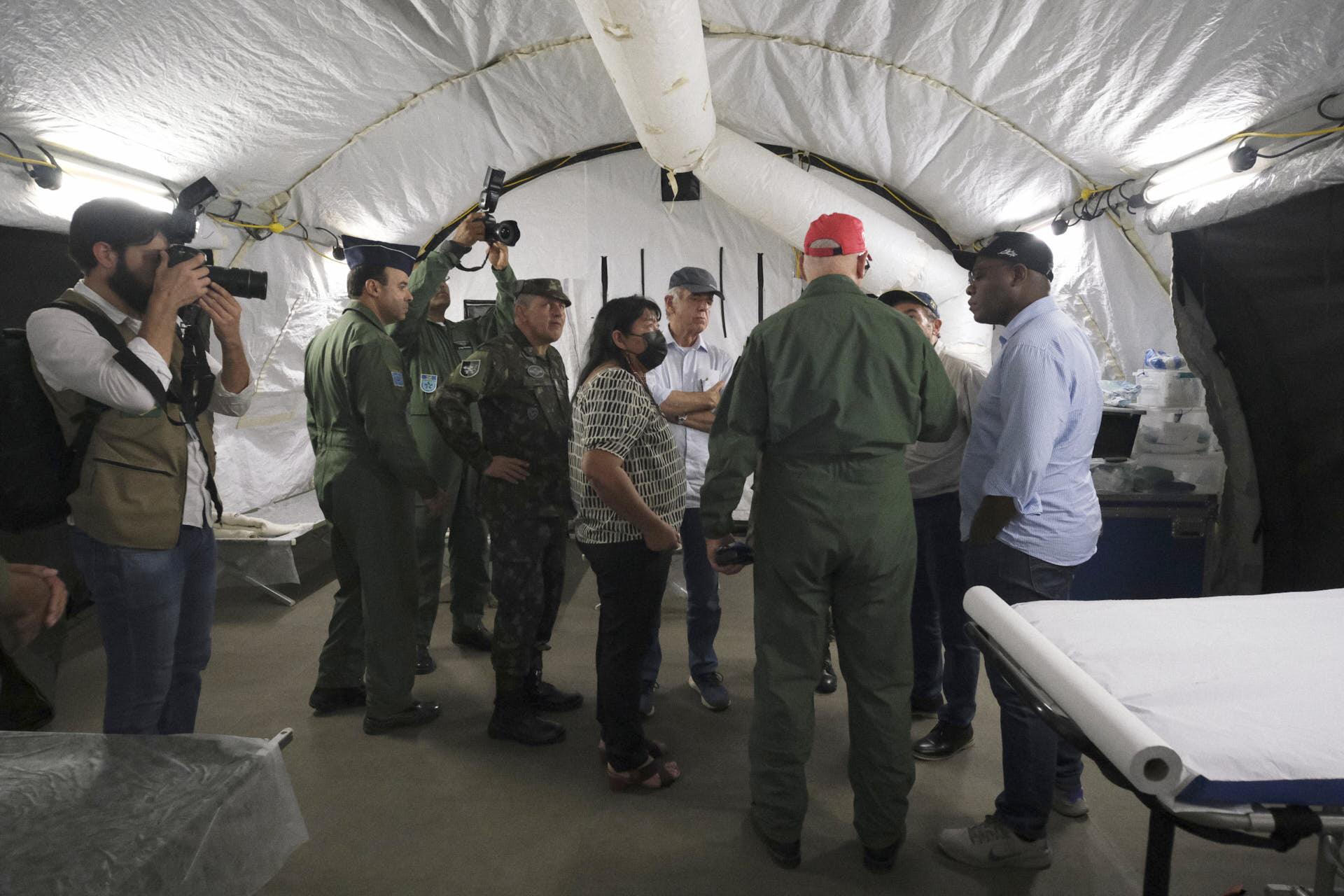
BRAZILIAN MINISTERS OF DEFENCE, JOSÉ MÚCIO, AND HUMAN RIGHTS, SILVIO ALMEIDA, AND FUNAI PRESIDENT, JOENIA WAPICHANA, OBSERVE YANOMAMI INDIGENOUS PEOPLE RECEIVING TREATMENT AT THE BRAZILIAN AIR FORCE FIELD HOSPITAL. PHOTO: FERNANDO FRAZÃO/AGÊNCIA BRASIL
Amid growing tension, the Brazilian government backed down on February 6, partially opening the airspace again. It created three flight corridors to “enable the coordinated and spontaneous departure of non-Indigenous people from illegal mining areas by air.” These corridors will remain in operation until February 13, meaning the government has given the criminals a week to escape. Two types of illegal miners will remain: those who have been abandoned, many of whom, at the most vulnerable end of the chain, live in situations analogous to slavery, or those who are prepared to confront the security forces, who are most likely heavily armed, and linked to organized crime operating in the region.
“We don’t want to harm innocent people. There are people there who are working to support themselves. There are women and children, and men working for their livelihoods,” said Brazil’s Minister of Defense, José Mucio Monteiro, at a press conference in Boa Vista last Wednesday. Asked by a reporter if he considered illegal miners to be “innocent”, he said he “couldn’t judge”. “We’ll assess that first,” he said. “When the time comes, the Federal Police and the justice system will decide who is guilty, and who will be punished,” he added, while also stating that he could not specify when all the miners would be removed from the area.
The operation opens yet another area of concern. There are regions where mining has invaded community areas and co-opted young people into criminal activity, and where it has made communities dependent on food given in exchange for work. There are fears the disorganized withdrawal of invaders will further unbalance such communities. “The decision is to remove non-Indigenous miners from within the Yanomami territory, and the sequential plan is to guarantee tools and equipment so the Indigenous people can go back to producing their own food within the territory,” Sonia Guajajara, Brazil’s Minister of Indigenous Peoples, explained to SUMAÚMA when visiting Boa Vista. “Initially, an emergency response will provide a basic food package to Indigenous families, even those already involved [with illegal mining activities], because they’re not there because of a decision, but through a lack of choice. The expulsion plan provides care for Indigenous people who are in the surrounding areas or who are already involved with the illegal miners because they had no way out,” she added.
The minister flew over the area last Sunday and described the images as “shocking”. “The territory has been taken over by mining, by destruction. The rivers are all contaminated with mercury or even have dirty, muddy water, due to the use of mining machines, making it impossible for this water to be consumed. The Yanomami have no water to drink,” she said. “It is terribly sad to see the extent of this destruction of the environment and the nutritional crisis of the people. We can only understand by seeing it with our own eyes. The news doesn’t go far enough to show the reality. It will take an intense, long-term effort to bring this destruction to an end.”
Translated by James Young
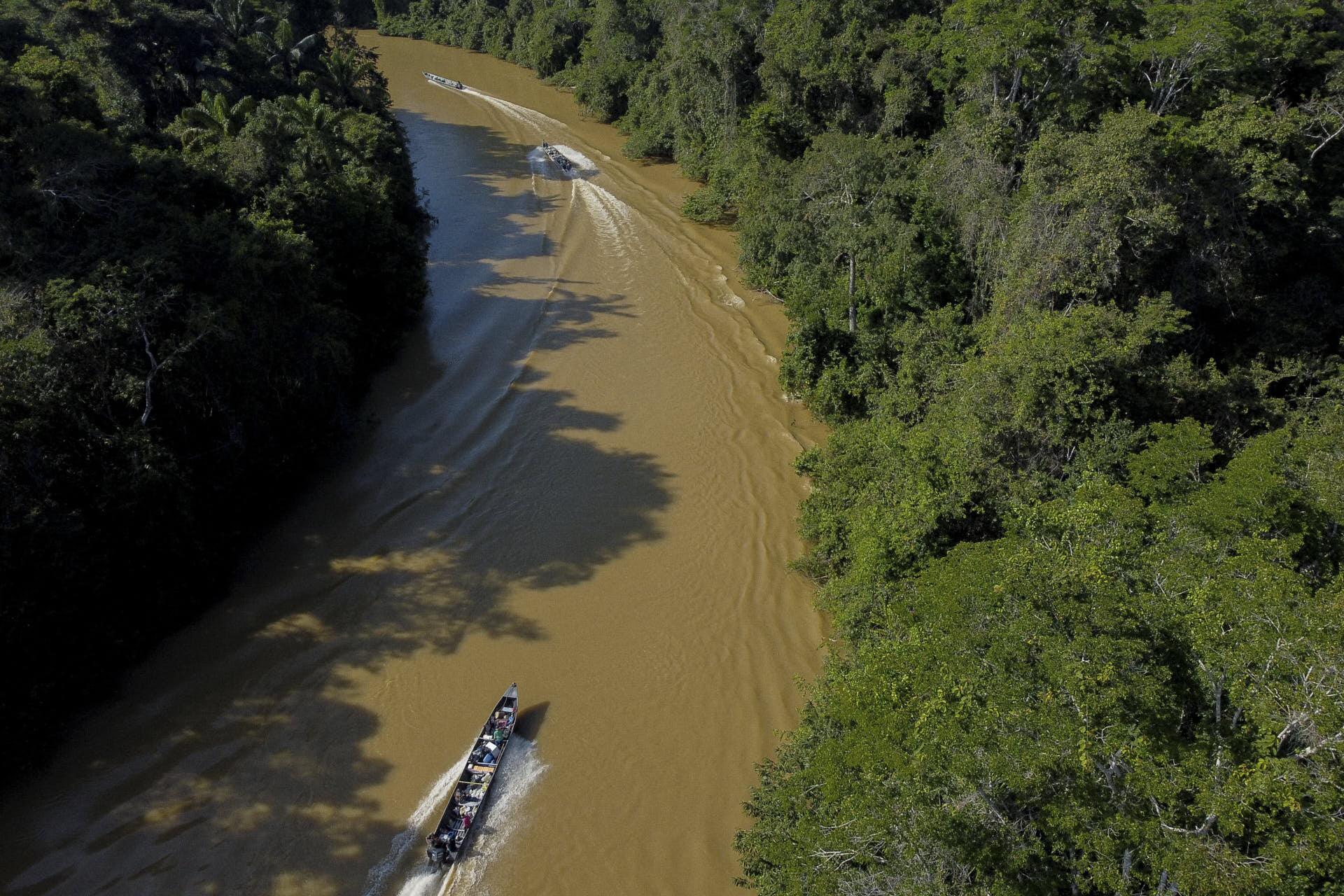
AERIAL VIEW OF PORTO DO ARAME (ARAME PORT), ON THE BANKS OF THE URARICOERA RIVER, THE MAIN ACCESS POINT FOR THOSE SEEKING TO LEAVE ILLEGAL MINING AREAS WITHIN THE YANOMAMI INDIGENOUS TERRITORY IN THE STATE OF RORAIMA, BRAZIL. PHOTO: MICHAEL DANTAS/AFP





